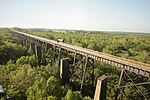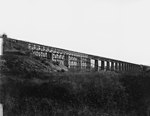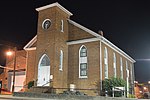High Bridge Trail State Park

High Bridge Trail State Park is a rail trail in Southside Virginia converted from a rail line last belonging to Norfolk Southern. The first section of the High Bridge Trail opened in 2008 and the final section was completed in 2012. With a length of more than thirty miles, the trail is shared by bicyclists, pedestrians and equestrians — and includes a restored crossing at the Appomattox River over the historic High Bridge – from which the park derives its name. The lineal park traverses Appomattox, Nottoway, Cumberland, and Prince Edward counties as well as Pamplin City, Prospect, Farmville, Rice and Burkeville. Where the trail traverses Farmville, it directly adjoins Longwood University at the campus' satellite housing and athletic site.
Excerpt from the Wikipedia article High Bridge Trail State Park (License: CC BY-SA 3.0, Authors, Images).High Bridge Trail State Park
High Bridge Trail,
Geographical coordinates (GPS) Address Nearby Places Show on map
Geographical coordinates (GPS)
| Latitude | Longitude |
|---|---|
| N 37.311280555556 ° | E -78.318330555556 ° |
Address
High Bridge Trail
High Bridge Trail
Virginia, United States
Open on Google Maps






